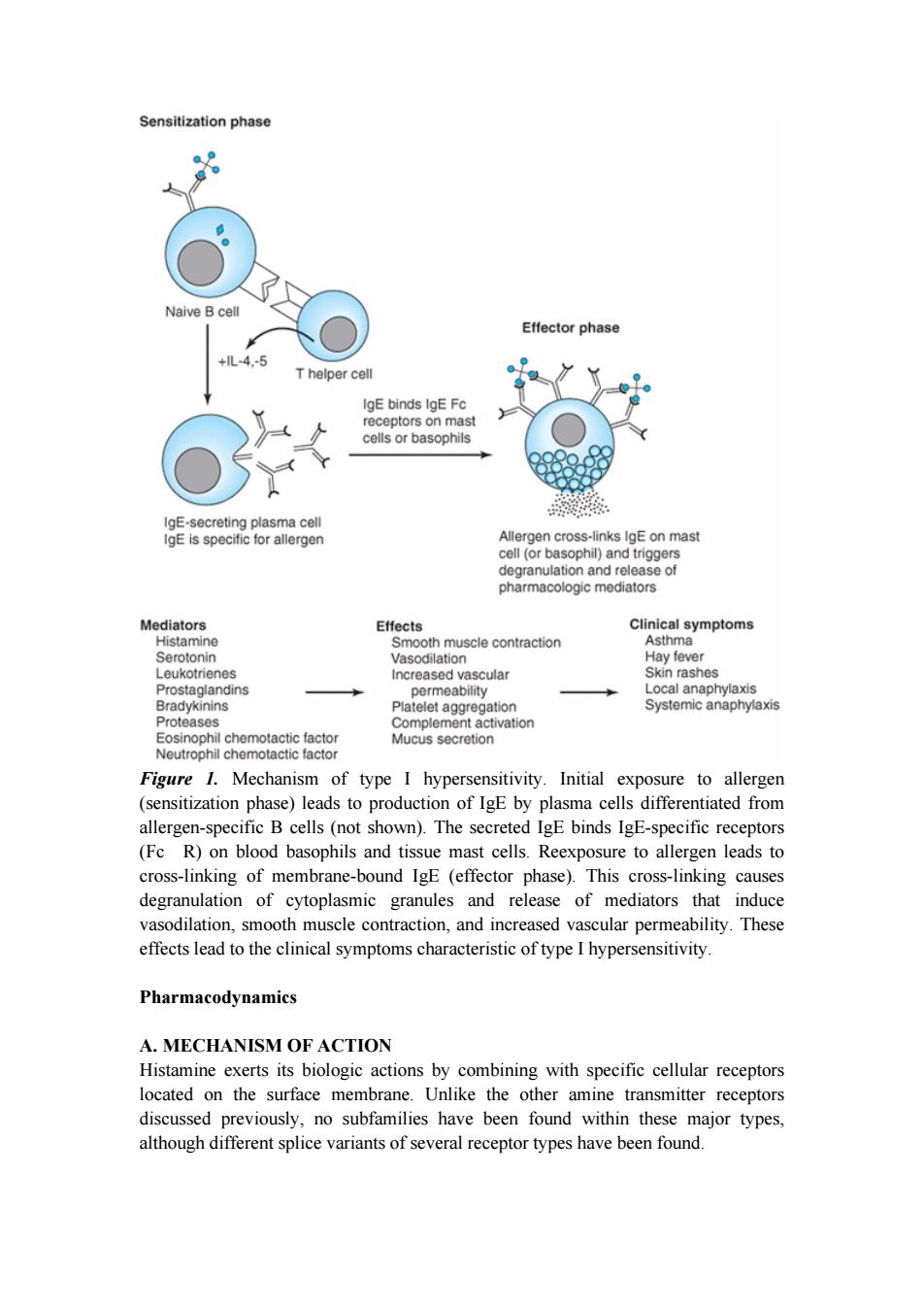正在加载图片...

Sensitization phase Naive Bcell Effector phase +lL-4-5 T helper cell IgE binds IgE Fc receptors on mast cells or basophils IgE-secreting plasma cell IgE is specific for allergen Allergen cross-links IgE on mast cell (or basophil)and triggers degranulation and release of pharmacologic mediators Mediators Effects Clinical symptoms Histamine Smooth muscle contraction Asthma Serotonin Vasodilation Hay fever Leukotrienes Increased vascular Skin rashes Prostaglandins permeability Local anaphylaxis Bradykinins Platelet aggregation Systemic anaphylaxis Proteases Complement activation Eosinophil chemotactic factor Mucus secretion Neutrophil chemotactic factor Figure 1.Mechanism of type I hypersensitivity.Initial exposure to allergen (sensitization phase)leads to production of IgE by plasma cells differentiated from allergen-specific B cells(not shown).The secreted IgE binds IgE-specific receptors (Fc R)on blood basophils and tissue mast cells.Reexposure to allergen leads to cross-linking of membrane-bound IgE (effector phase).This cross-linking causes degranulation of cytoplasmic granules and release of mediators that induce vasodilation,smooth muscle contraction,and increased vascular permeability.These effects lead to the clinical symptoms characteristic of type I hypersensitivity Pharmacodynamics A.MECHANISM OF ACTION Histamine exerts its biologic actions by combining with specific cellular receptors located on the surface membrane.Unlike the other amine transmitter receptors discussed previously,no subfamilies have been found within these major types, although different splice variants of several receptor types have been found.Figure 1. Mechanism of type I hypersensitivity. Initial exposure to allergen (sensitization phase) leads to production of IgE by plasma cells differentiated from allergen-specific B cells (not shown). The secreted IgE binds IgE-specific receptors (Fc R) on blood basophils and tissue mast cells. Reexposure to allergen leads to cross-linking of membrane-bound IgE (effector phase). This cross-linking causes degranulation of cytoplasmic granules and release of mediators that induce vasodilation, smooth muscle contraction, and increased vascular permeability. These effects lead to the clinical symptoms characteristic of type I hypersensitivity. Pharmacodynamics A. MECHANISM OF ACTION Histamine exerts its biologic actions by combining with specific cellular receptors located on the surface membrane. Unlike the other amine transmitter receptors discussed previously, no subfamilies have been found within these major types, although different splice variants of several receptor types have been found